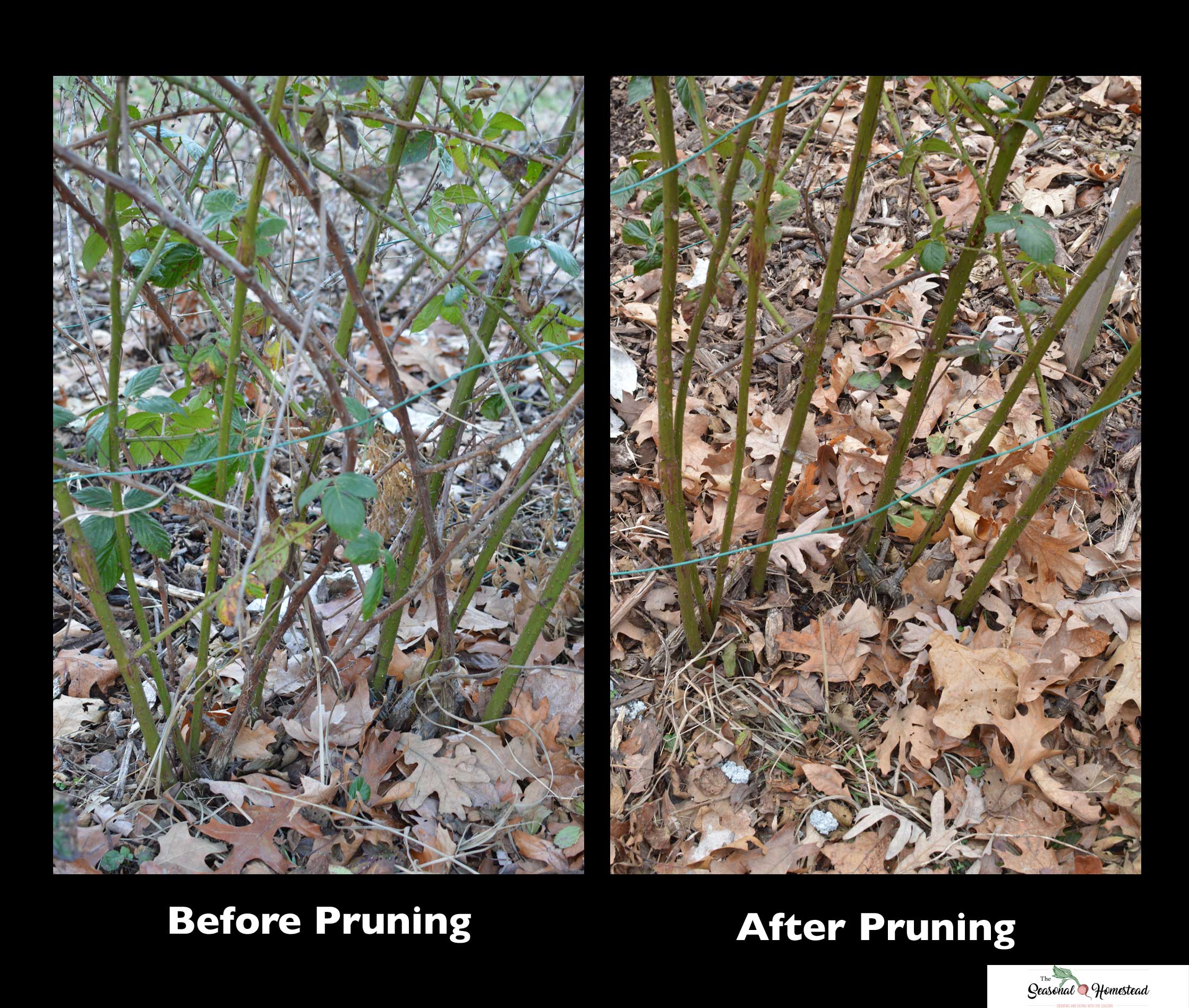How to Prune Blackberries
Learning how to prune blackberries will help you achieve huge harvests of large, sweet berries! Pruning also helps the blackberries become easier to pick and there is less chance of disease.

I love blackberries and I’ve made some easy to understand illustrations so you can visually see how to prune blackberries with success.
This post contains affiliate links. Here is the full disclosure.
Blackberry Growing Habits
In order to understand how to prune blackberries it’s important to understand the basics of how blackberries grow. Blackberries are perennials. This means that the root system will live for many years. The root system produces new canes yearly. Canes produced are biennial and die after two years.
The first year of growth on a blackberry is called a primocane. For many varieties of blackberries (though not all) this is primarily a vegetative year of growth and will not produce fruit.
The second year of growth on a blackberry is called a floricane. Floricanes will bear fruit.
How to Prune Blackberries
During the primocane year of blackberry growth, you will notice one main cane growing. Looking at the photo below, you can see a primocane shooting up on the right. A primocane will be flexible and green. When the blackberry reaches four to five feet in height, prune the tip with a sharp pair of pruning shears. This will keep the cane from growing taller. If your blackberries are not vigorous and small in diameter, prune the blackberries at 3-4 feet.

Heading or tipping the canes in the primocane year, triggers the lateral or side branches to grow. More lateral branches equates to more fruit and higher yields during the floricane year.
I often start to tip my blackberries around mid summer here in zone 6b. All the blackberry canes grow at different rates, so you’ll have to go through and tip more than once.



In late winter, it is time to prune the lateral branches from the floricanes. You also need to remove canes that fruited the year prior. Most of the time, it is easy to determine which is a dead cane and which is a floricane. If you’re unsure, do the fingernail test.

Scratch the cane of the blackberry with your fingernail. If it is green underneath it is still living. If it’s too hard to scratch or is brown after scratching it is dead.
Prune all dead canes to the ground. Pruning spent blackberry canes will help trigger new primocanes to grow.

Can you see in the image above how the old canes are darker (dead) and the new canes are green? I simply took out all the dead canes by pruning them to the ground.
Now the real work begins, pruning the laterals. For my Kiowa blackberries, they are very vigorous. The lateral branches are often 4 feet long and they all weave in and tangle with each other. Kiowa is a wickedly thorny variety so this adds to the fun!

It can be a bit overwhelming, but just take one cane at a time. Blackberry laterals are easy to prune once you get the hang of it.

This is the same blackberry bush in the image above, with all the lateral branches trimmed back to around 18 inches and dead canes removed.
You can prune all lateral branches to 12 to 18 inches long. I keep mine around 18 inches because they are so vigorous. If you have any laterals within 18 inches of the ground prune them off entirely. The fruit will end up drooping on the ground and is more likely to be attacked by bugs. In my case, the chickens come up and eat them if they are too close to the ground.
I also have thornless variety, Navaho. They aren’t as vigorous or as productive as Kiowa but are quite erect and consequently very easy to prune.

This is what Navaho Blackberry looks like before pruning. It’s a lot easier to see what’s happening and it’s nice when pruning these you don’t get scratched.
Let’s talk about why you want to prune the lateral branches. The lateral branches will bear all the fruit.
Pruning the laterals does not decrease yields since most fruit develops on the lateral buds closer to the main cane.
Pruning laterals increases fruit size.
When you prune lateral branches it is easier to pick.
Remember my photo of the Kiowa blackberry above? I would get stabbed and scratched every time I walked by the bushes. Now I have no problems! You can just see how much easier they will be to pick fruit from.

Summing things up…
Prune primocane tips to 4-5 feet, as soon as they reach that height in summer.
In late winter, remove all dead canes by pruning them to the ground. If you’re unsure which are living or dead, do the fingernail test.
Prune floricane laterals in late winter. Cut them to 12-18 inches in length. Prune off any laterals that are within 18 inches of the ground.
When summer comes, enjoy a great harvest!

What are the Best Blackberry Varieties?
Since writing this post originally, we moved and I’ve planted several new blackberry varieties. The thorny blackberries in my experience are always very prolific and vigorous but they don’t taste the best and they are very difficult to prune.
I have switched to all thornless varieties and my favorites right now are Ponca and Ouachita blackberries. Here is some more detailed information on the best blackberry varieties.


